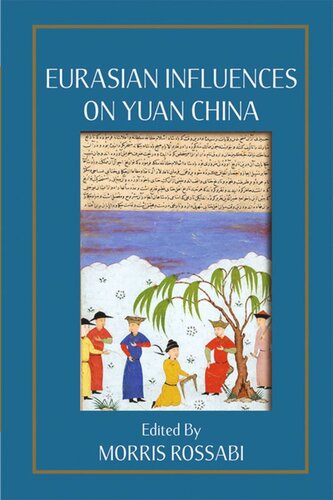

Most ebook files are in PDF format, so you can easily read them using various software such as Foxit Reader or directly on the Google Chrome browser.
Some ebook files are released by publishers in other formats such as .awz, .mobi, .epub, .fb2, etc. You may need to install specific software to read these formats on mobile/PC, such as Calibre.
Please read the tutorial at this link: https://ebookbell.com/faq
We offer FREE conversion to the popular formats you request; however, this may take some time. Therefore, right after payment, please email us, and we will try to provide the service as quickly as possible.
For some exceptional file formats or broken links (if any), please refrain from opening any disputes. Instead, email us first, and we will try to assist within a maximum of 6 hours.
EbookBell Team

4.4
42 reviewsThis book documents the extraordinarily significant transfers and cultural diffusion between the Mongol Yuan Dynasty of China and Central and West Asia, which had a broad impact on Eurasian history in the 13th and 14th centuries. The Yuan era witnessed perhaps the greatest inter-civilisational contacts in world history and has thus begun to attract the attention of both scholars and the general public. This volume offers tangible evidence of the Western and Central Asian influences, via the Mongols, on Chinese, and to a certain extent Korean, medicine, astronomy, navigation, and even foreign relations. Turkic peoples and other Muslims played particularly vital roles in such transmissions. These inter-civilisational relations led to the first precise Western knowledge of East and South Asia and stimulated Europeans to discover new routes to the East. The authors of these essays, specialists in their respective fields, shine a light on these vital exchanges, which anyone interested in the origins of global history will find fascinating. “In this volume of wide-ranging essays, scholars from the United States, China and Europe present new insights into how the close relationship between Mongol China and Ilkhanid Persia, and the Mongol employment of Eurasians (many Muslims) of diverse origins, shaped Yuan politics, foreign trade, and culture (scientific knowledge, architecture, medicine), as well as the life of East Asia in the 13th to 14th centuries and beyond. Not surprisingly, in addressing the nature of cultural influence, and how it should or can be identified, measured, and assessed, these authors do not reach a consensus, but do shed light on issues of agency - Mongol, Chinese, and other - and in so doing offer up a wealth of fascinating detail about an era of broad interest to comparative historians of the premodern world as well as specialists on China.” - Ruth W. Dunnell, James P. Storer Professor of Asian History, Kenyon College “A central aim of this volume is to stimulate scholarly interest in the Yuan Dynasty, the ‘step-sister in the study of China.’ By providing a fascinating array of articles - ranging from Muslim maritime semi-colonialism to Chinese resistance of Islamic architectural and astronomical innovation, juxtaposed with medical and cartographical exchanges from West to East, as well as the political influence of Qip?aq Turks in Beijing and neo-Confucian Uyghurs in Chos?n Korea - it has thereby succeeded admirably.” - Johan Elverskog, Altshuler University Distinguished Professor, Southern Methodist University